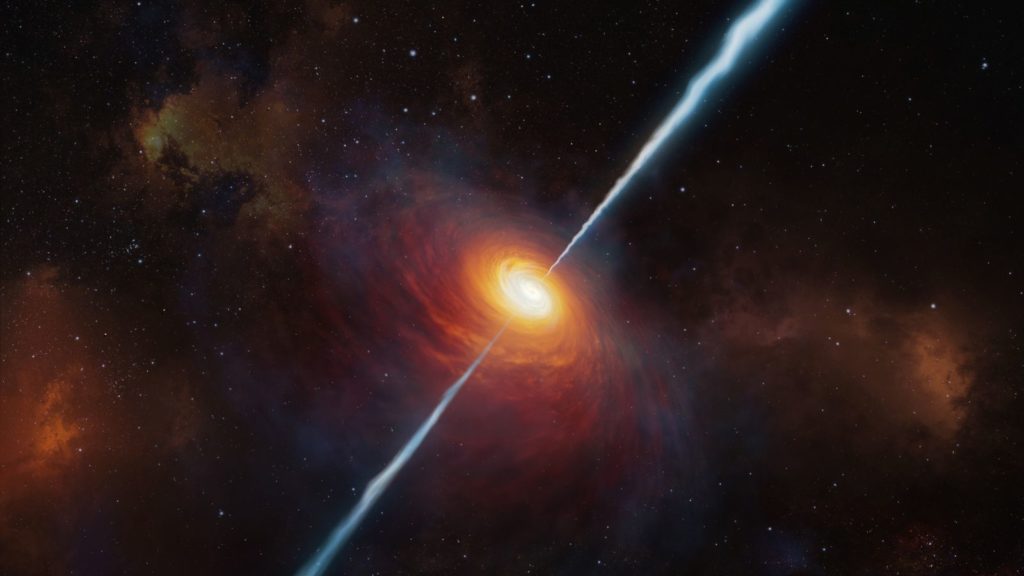Astronomers solve mystery about quasars – and the likely future of the Milky Way | Science & Tech News

Astronomers have solved the mystery of how quasars – the brightest and most powerful objects in the universe – are ignited.
These celestial objects of very high luminosity are found in the centres of some galaxies and can be a trillion times brighter than the sun, according to NASA.
Although first discovered 60 years ago, quasars have remained a mystery because it was unclear how such powerful activity could be generated.
Now, research suggests it is a result of galaxies merging.
Scientists, led by the Universities of Sheffield and Hertfordshire, found what they describe as “the presence of distorted structures” in the galaxies that contain quasars.
The researchers analysed data from the Isaac Newton Telescope in La Palma, one of the Canary Islands.
The team compared observations of 48 quasars and their host galaxies with images of more than 100 non-quasar galaxies.
At the centre of most galaxies are thought to be supermassive black holes – many million times denser than the sun.
These galaxies also contain substantial amounts of gas that are out of reach of the black holes.
When galaxies collide, the gases are driven toward the black hole where they are then consumed, releasing “extraordinary amounts of energy in the form of radiation, resulting in the characteristic quasar brilliance”, according to researchers.
They concluded that galaxies hosting quasars are approximately three times as likely to be interacting or colliding with other galaxies.
Read more:
Supermassive black hole pictures
Venus has more volcanoes than we thought
Professor Clive Tadhunter, from the University of Sheffield, said: “Quasars are one of the most extreme phenomena in the universe, and what we see is likely to represent the future of our own Milky Way galaxy when it collides with the Andromeda galaxy in about five billion years.
“It’s exciting to observe these events and finally understand why they occur – but thankfully Earth won’t be anywhere near one of these apocalyptic episodes for quite some time.”
Dr Jonny Pierce, from the University of Hertfordshire, said: “It’s an area that scientists around the world are keen to learn more about.
“One of the main scientific motivations for NASA’s James Webb Space Telescope was to study the earliest galaxies in the universe, and Webb is capable of detecting light from even the most distant quasars, emitted nearly 13 billion years ago.
“Quasars play a key role in our understanding of the history of the universe, and possibly also the future of the Milky Way.”
The findings were published in the Monthly Notices of the Royal Astronomical Society journal.
Recent Posts
- WATCH: Skydiver dangles from Cessna Caravan after parachute snags on tail
- EAA brings back Homebuilders Week webinars for new and experienced builders
- Boeing-backed EVIO launches EVIO 810 hybrid-electric regional aircraft program
- Netflix jet activity spikes days before Warner Bros. acquisition offer
- Daher Kodiak 900 aircraft recieves Brazilian airworthiness certification







Recent Comments